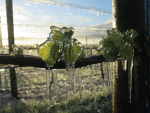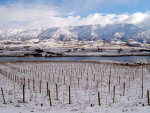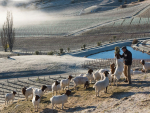Temperatures quickly recovered and January turned into a warm month across most of New Zealand. Fast forward to summer 2024, and things began early in most regions, with a warm run of temperatures from late November through until mid-December. Several days over 30C were recorded from Gisborne to Canterbury, setting the scene for idyllic Christmas weather. But by mid-December it was clear things were changing. The first signs were a noticeable increase in cloud and humidity over the upper North Island, as east to northeast winds developed. As these conditions persisted into the Christmas break, the change became more of a concern, with low sunshine and low maximum temperatures driving down the mean temperature during the second half of December. The new year brought little respite and temperatures continued to cool. In some areas, such as Wairarapa and Canterbury, the mean daily maximum temperature was more than 6C below average, with parts of North Canterbury recording minimums below 4C during early January. All regions experienced an unusually prolonged run of cool nights. Under La Niña conditions we expected reduced sunshine totals in eastern regions and increased sunshine in the west, and this part has certainly played out so far.
What went wrong?
From August 2024 onwards there was a lot of commentary about the sea surface temperature cooling along the equatorial Pacific Ocean and that this was usually an early sign of an impending La Niña. Spring produced some fairly typical weather for most parts of New Zealand and still the climate predictions remained the same – another summer with above average temperatures was expected in all regions. As low pressure brought the cooler shift in December, high pressure became slow-moving in the south Tasman Sea and helped to pull cool air from the Southern Ocean northwards. With this anticyclone almost stationary for several weeks, it meant that we have had very little respite from a cool south to southeast wind flow at a critical time of the year for growers.
Long term climate drivers are being continually studied and the longer we study, and with the exponential increase in available weather data around the world, we are discovering more about these long-term patterns and how they interact to create the weather we have today. We understand how La Niña and El Niño work, but what we are learning more is how they work with other climate drivers such as the Madden-Julian Oscillation (MJO), which is a large pulse of moist air that travels eastwards across the Pacific Ocean from the Indian Ocean; the Southern Annular Mode (SAM), which is the contraction and expansion of high pressure systems that circle Antarctica; or more recently the Indian Ocean Dipole (IOD), which is an injection of warm, humid air across the Australian continent. The combination of these, as well as the time of year when each are present, can have a massive effect on our day-to-day weather. Whilst a few cool and wet days during summer can happen from time to time, it was the prolonged nature of this event that has been most evident and will take further study to understand. As warmer conditions have returned later in January, it is still possible that the remainder of summer and early autumn will see temperatures closer to average. However the five-week period of weather that resembled early September will certainly put a dent in the temperature averages and growing degree day totals for this summer.
Outlook for February and March
Gisborne/Hawke's Bay
Warm north to northwest winds are likely to return at times during late summer and into early March, so there will be further periods of warm weather. However, we are still likely to be affected by easterly onshore flows that increase cloud and the potential for rain. Mean temperatures are likely to be near or a little above average.
Wairarapa
West to northwest winds are likely to return at times, but cloudier than normal conditions may remain through summer and early autumn as east to southeasterly conditions return. Mean temperatures are likely to lift to near average and rainfall is likely to be close to average.
Nelson
Temperatures continue to run about or above average for the remainder of summer and into autumn. Rainfall totals may run below average but could increase with active fronts moving in from the west at times as northwest winds return.
Marlborough/North Canterbury
Temperatures should continue to become milder and reach average values for the remainder of summer and early autumn. The temperature pattern may be quite lopsided with a few very warm periods with a northwest flow interspersed with periods of cool, cloudy conditions under an easterly flow. Rainfall totals are likely to be close to average and sunshine totals may remain below average for the next few months.
Central Otago
Temperatures are likely to be remain above average. Northwest winds may strengthen in February and March, bringing unsettled weather at times. Rainfall totals are likely to be close to average, but dry spells are likely across the lower South Island when easterly conditions dominate further north.
James Morrison runs Weatherstation Frost Forecasting: weatherstation.net.nz














